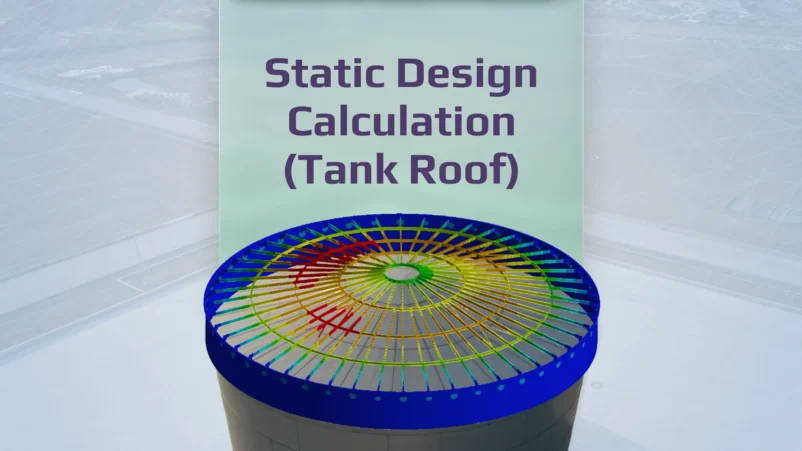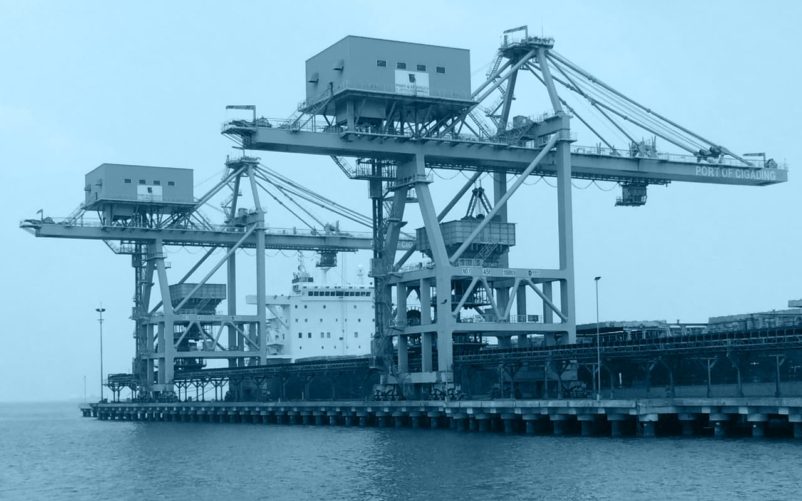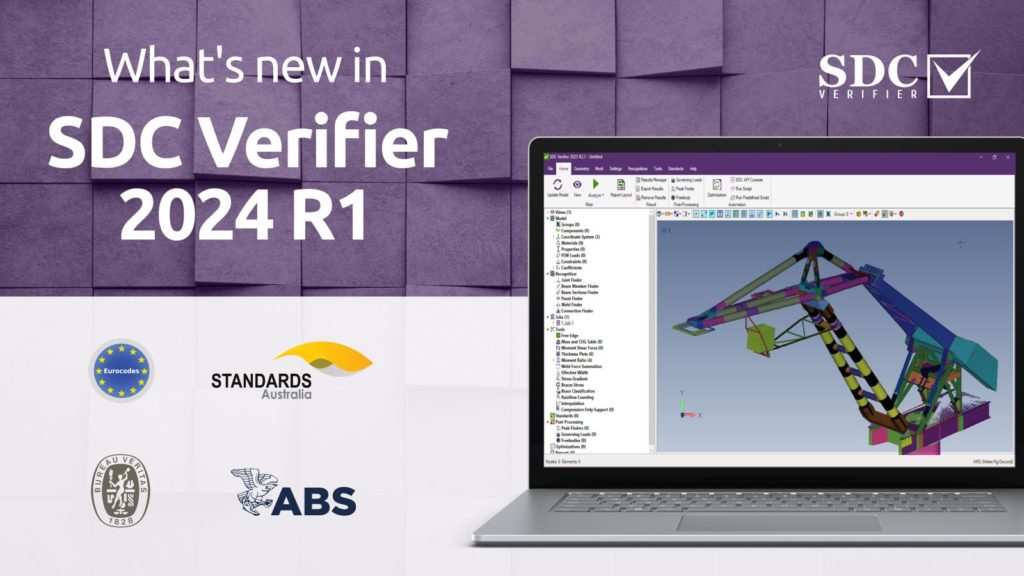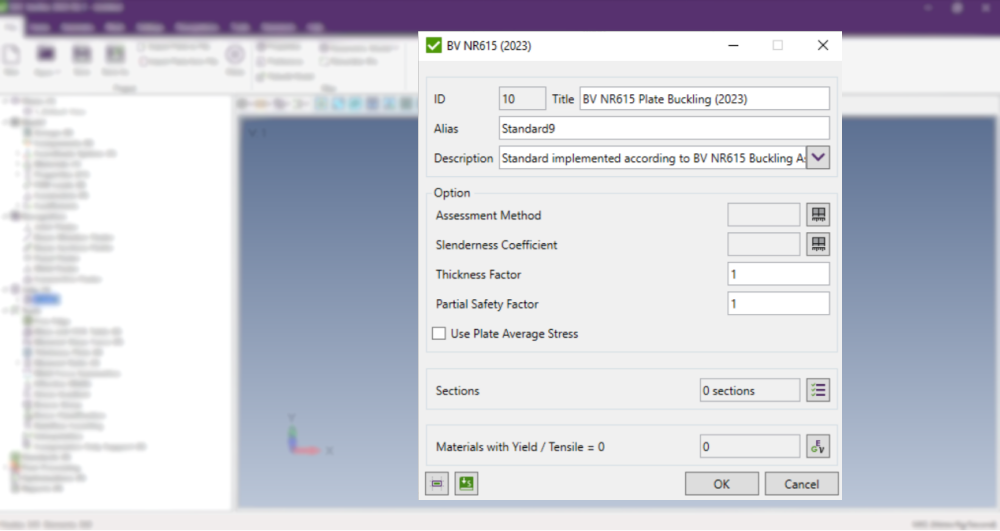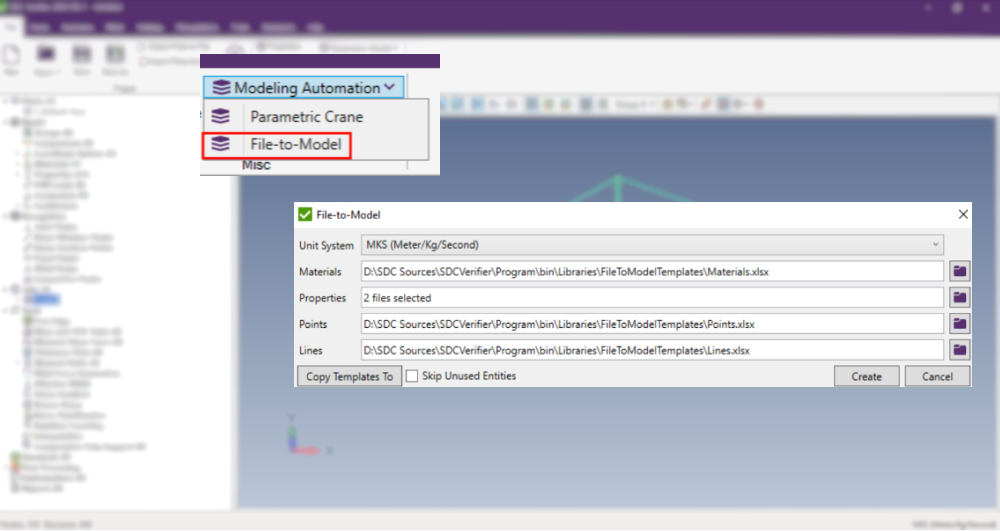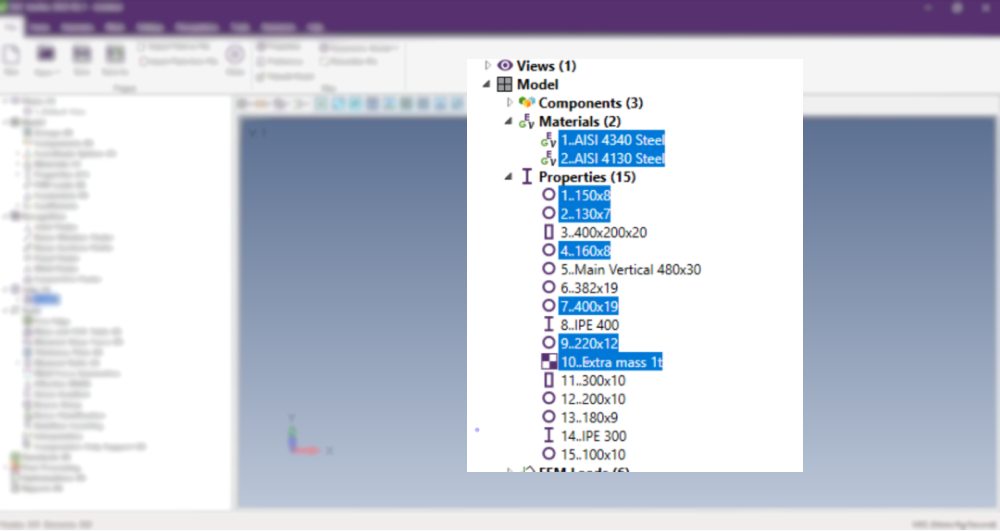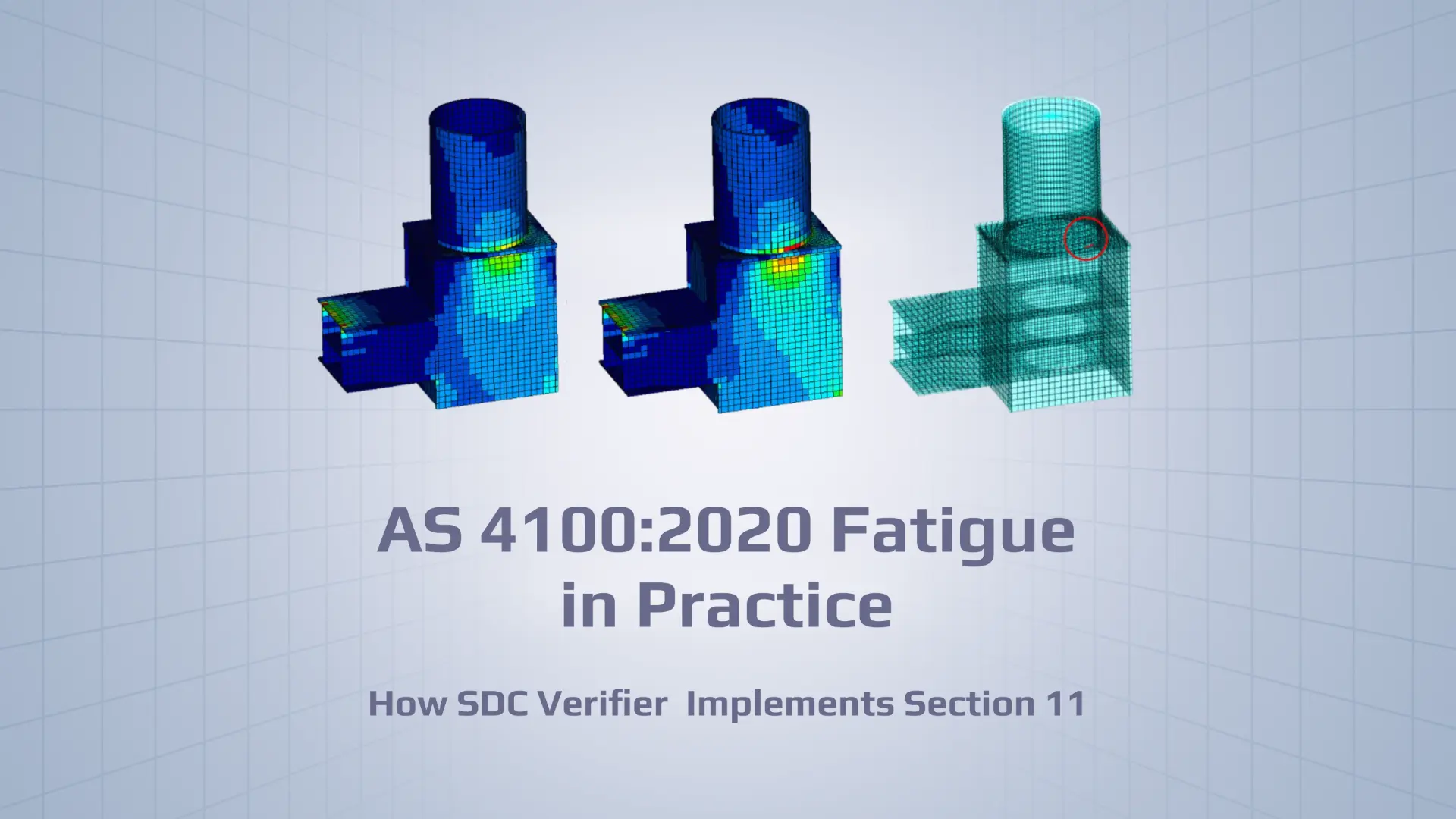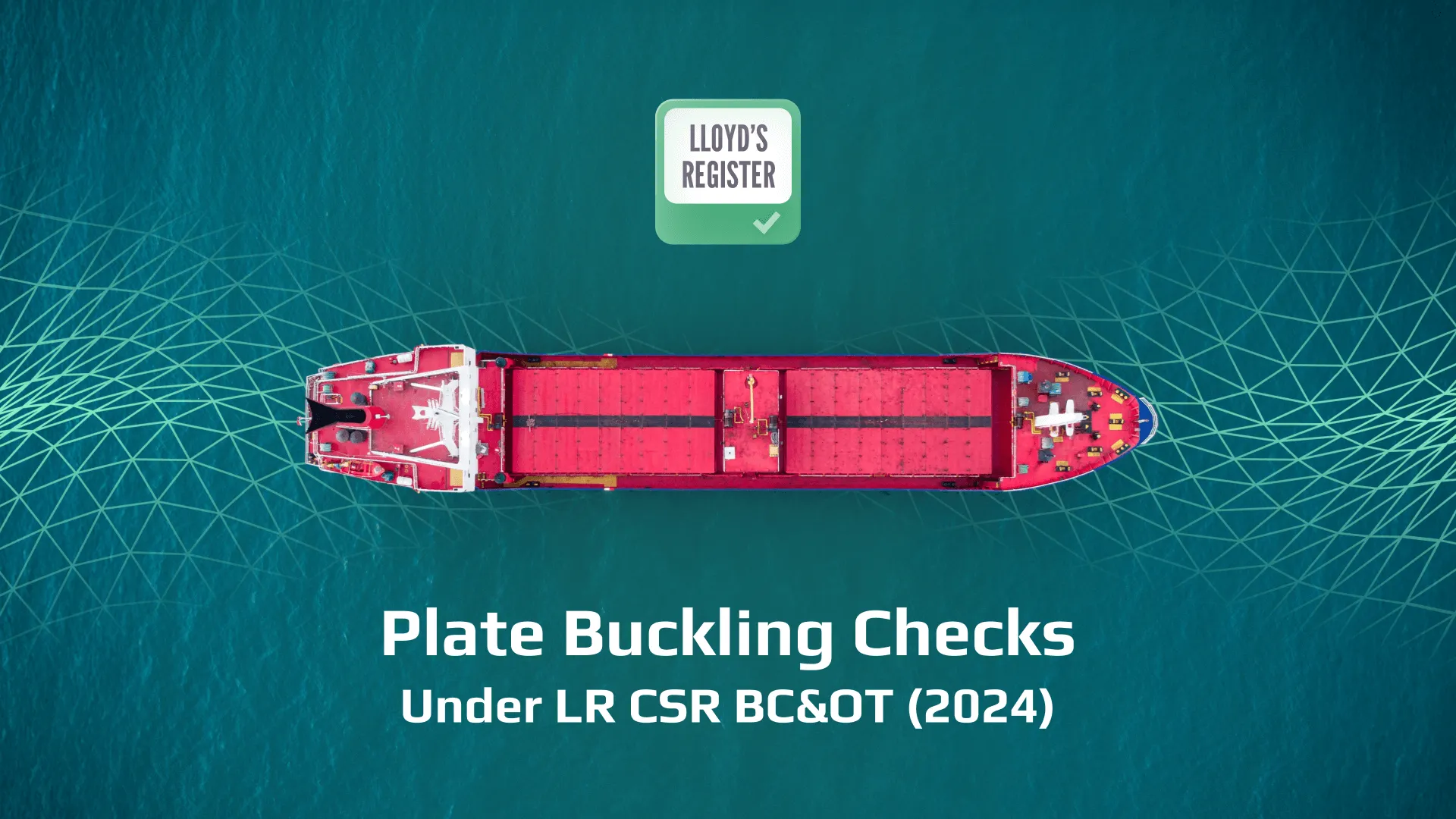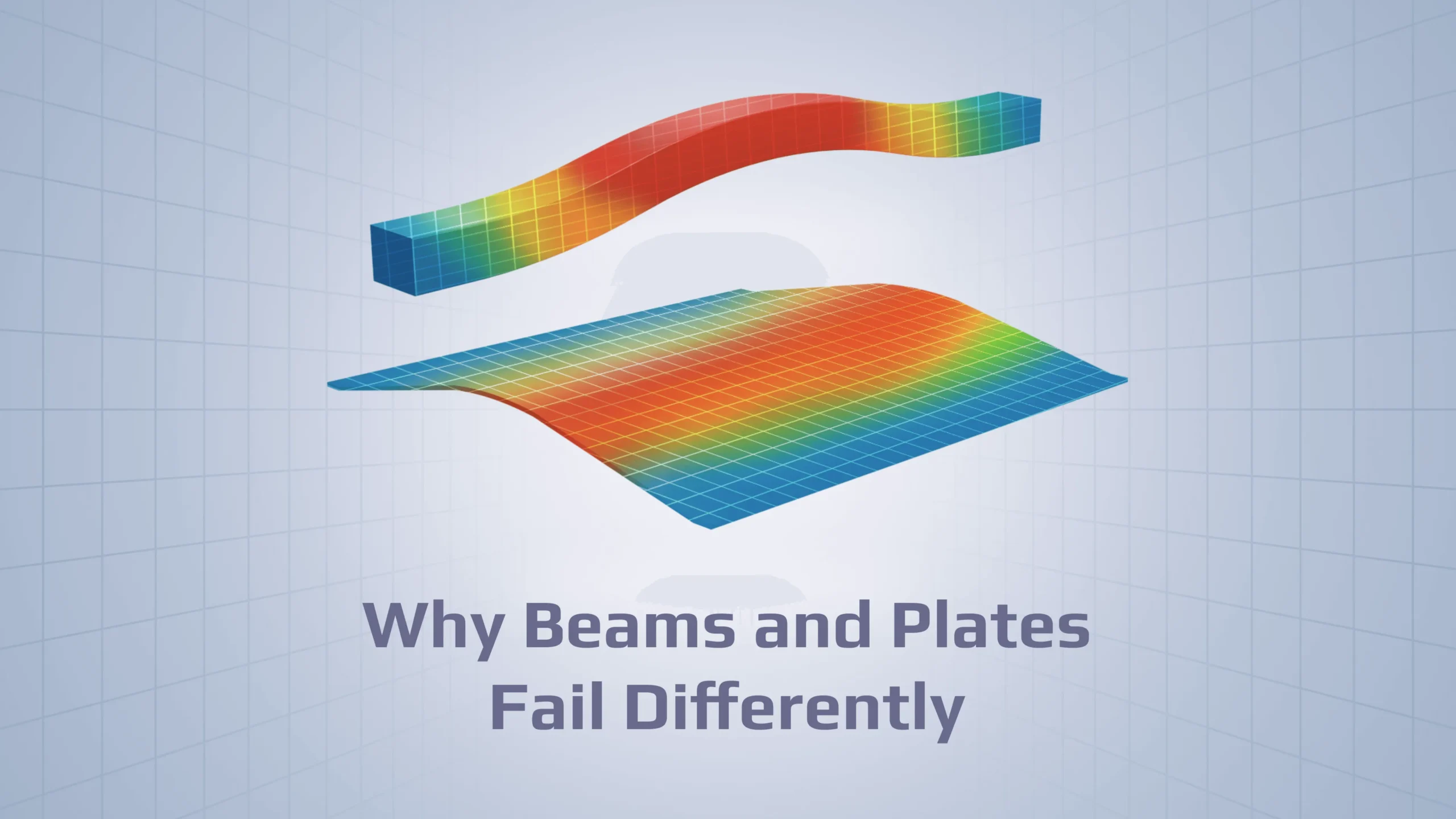SDC Verifier 2024 R1: New Standards for the Plate Buckling and Weld, Rainflow Counting, and More
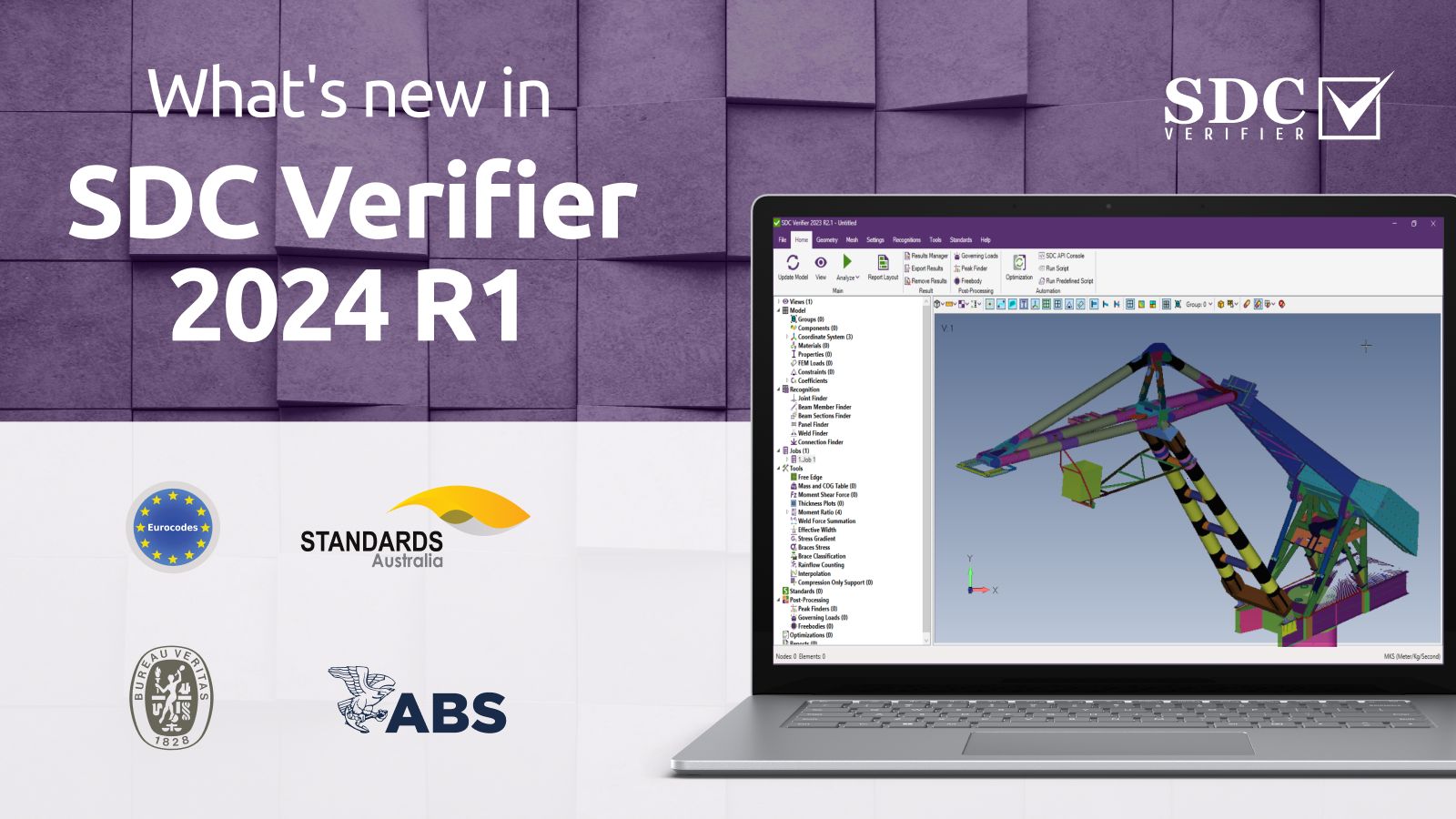
SDC Verifier’s latest release is packed with upgrades to streamline structural engineering analysis. We’ve expanded our standards library, added Rainflow Counting for fatigue analysis, implemented advanced features, and fixed bugs for a smoother workflow.
This article is available in audio format:
New Standards for Diverse Industries
Simulation and verification software advancements are constantly expanding the possibilities for structural engineers. To enhance efficiency and customization in your SDC Verifier experience, we’ve included in our library such new standards.
ABS Offshore Structures, Plate Buckling (2022) & ABS Floating Production Installations, Plate Buckling (2024)
The American Bureau of Shipping (ABS) sets the standard for structural safety in offshore installations. SDC Verifier ensures your designs align with the latest ABS plate buckling rules, including those for:
- Offshore Installations: Oil rigs, platforms, MOUs, SPMs
- Floating Production Installations: Ship-type, column-stabilized, tension leg, spar, and converted vessels.
Key Areas Covered:
- Plate Panels: Detailed requirements for buckling and failure prevention.
- ABS Integration: Works alongside existing ABS rules for comprehensive compliance.
SDC Verifier offers updated implementations for a seamless workflow:
- Clear Titles: Standards formerly listed as “ABS Plate Buckling (2004/2014)” now include “Offshore Structures” and “Floating Production Installations” for easy identification.
- Up-to-date References: We’ve meticulously aligned all implementations (2004, 2014, 2022, 2024) with the latest ABS standards.
BV NR615 Plate Buckling (2023)
Simplify your compliance with Bureau Veritas NR615 for rigorous analysis of unstiffened plated structures. SDC Verifier offers:
- Standalone Power: Utilize the standalone SDC Verifier program for focused analysis.
- Multi-Platform Integration: Seamlessly work within Ansys Mechanical, Femap, and Simcenter 3D.
- Accurate Coverage: Ensure your calculations align with BV NR615 (July 2023), including buckling capacity and ultimate strength requirements for unstiffened panels.
What Does This Mean for You?
- Confidence: Verify the buckling resistance of key unstiffened structural components:
- Local supporting members
- Primary supporting members
- Pillars, brackets, and more
AS 4100 (2020)
AS 4100 is your go-to Australian Standard for safe and reliable steel structures. SDC Verifier’s current implementation focuses on streamlined member checks for beam models, covering:
- Forces: Axial tension/compression, bending, shear, and combined loads.
- Common Shapes: Double symmetric I-sections, single symmetric channels, circular/rectangular tubes, and bars.
- Applications: Buildings, fixed structures (bridges, platforms), cranes, etc.
What This Means for You
- Confidence: Ensure your beam designs meet AS 4100 (2020) standards.
- Efficiency: Automate complex member calculations, replacing the older AS 4100-1998 standard.
Ensure the accuracy of your AS 4100 steel structure calculations. Our benchmarks carefully follow the Australian Steel Institute’s (ASI) Steel Structures – Sample Worked Problems to AS 4100.
More AS 4100 Capabilities Coming Soon!
This is just the beginning of our AS 4100 support. Stay tuned for future implementations addressing welds, fatigue, and other key areas of the standard.
Eurocode3 Welds 1D (EN1993-1-8, 2005)
For structural engineers working within the European Union, EN 1993-1-8 (Eurocode 3) is a must-know standard. SDC Verifier’s 1D Welds check offers a major advantage: the ability to assess common RHS chord joints (T, X, Y) with H/I or RHS braces, even on models meshed with 1D beam elements.
Why This Matters
- Quick Initial Estimates: Get a rapid strength assessment of your joints using a simplified model.
- Strategic Refinement: Identify which joints warrant more detailed modeling (2D or 3D elements) with greater confidence.
Scope of Application:
- Steels: Applies to weldable structural steels outlined in EN 1993-1-1.
- Thickness: Designs for materials 4mm or thicker.
- Weld Compatibility: Ensure the weld metal’s properties align with the base steel.
These standards cover the most frequently requested standards since the last release by SDC Verifier and are used in such industries as Oil and Gas, Heavy Lifting, Pipes and Petrochemicals, Civil, Offshore and Maritime, and Machinery.
Download SDC Verifier 2024 R1 and unlock compliance with the latest ABS, BV NR615, AS 4100, and Eurocode 3 standards.
Usage of Rainflow Counting Tool in Fatigue Standards
By combining Rainflow Counting with fatigue analysis, engineers can predict more accurately the fatigue life of components and structures. This information is crucial for optimizing designs, determining maintenance schedules, and ensuring compliance with industry standards and regulations.
In SDC Verifier 2024 R1 such fatigue rules and regulations as Eurocode3 Fatigue (EN1993-1-9, 2005), EN 13001 Fatigue (2018), DIN 15018 (1984), F.E.M. 1.001 (3rd, 1998) are now available. They are widely used in Heavy Lifting, Civil, and Machinery industries for assessing the fatigue behavior of structures in terms of real-time cyclic loading patterns.
Elemental-Nodal Method in Weld Force Summation Tool and Weld Strength Standards
It is often hard to check design codes for welds, which are being evaluated across multiple parameters and influenced by various independent factors or their combinations.
To make welds verification clearer in the latest SDC Verifier release we replaced the Elemental (beta) method with the Elemental-Nodal method in the Weld Force Summation tool and Weld Strength standards, such as Eurocode 3 Welds (EN1993-1-8, 2005), DNV OS-C101-LRFD Weld Strength (2011), DNV OS-C201-WSD Weld Strength (2011
Added Normal Modes and Nonlinear Static Analyses
To make functionality even more advanced we added the additional types of analyses with options for SDC Verifier and SDC for Femap, including Normal Modes and Nonlinear Static analyses.
Now, when creating a new job in the SDC Verifier, the user can choose these analyses and complete calculations for any parameters.
Import of Beam Model from File
The other new feature for SDC Verifier and SDC for Femap also offers engineers greater flexibility and capability in their work. Now it is possible to import a beam model from a file and therefore create a model of beams by parameters set in the files, like materials, beam properties, points, and lines.
Other New Features, Improvements, and CAE Updates
Furthermore, added a possibility to read element orientations from geometry in Ansys, and added new flow tables, criteria, and contour plots for Rainflow Summation Check.
We’ve added reading of element orientations from Ansys geometry, ensuring accurate stress rotation into the weld direction (weld stresses for fatigue checks), plate direction (stresses for plate buckling checks), and hot spot stresses (based on weld stresses).
Also, our engineers implemented the following improvements to SDC Verifier to make the user experience seamless:
- Improve importing of Geometry or Analysis Model;
- Added possibility to set random colors for properties and materials;
- Added possibility to view a list of geometry and option to show/hide;
- Possibility to show/hide contact regions and connections.
Of course, the release is updated with the latest versions of popular CAE: Ansys 2024 R1, Femap 2401, and Simcenter 3D 2312.
For SDC for FEA, there are implemented such improvements as
- Added the possibility to import/export factors for predefined load combinations from/to JSON files.
- Added the possibility to select multiple items in the project tree.
- Added possibility to use custom-defined legend and High Fidelity option in Ansys.
- Updated formulas in some standards – EC3 Connections, VDI.
- Increased performance of Rainflow Counting Tool and project loading time increased when loading history for load groups.
- Added possibility to export data to Excel using COM object (check option in preferences);
- Several UI updates and other minor improvements
Streamline Your Workflow. Enhance Your Designs.
Experience the power of SDC Verifier 2024 R1. New standards, Rainflow Counting, advanced analysis modes, and more!
Check out our special webinar where we talk about all the updates
Bug Fixes
The following minor bugs are also fixed in this release to provide the best user experience to engineers.
| Bug Description | Solution |
| Optimization tool result not attached for direction-specific checks | Results of optimization tool now attached correctly |
| Fatigue summation check result file deleted on saving | Result file for fatigue summation check preserved upon save |
| Formula comparisons lacked precision in check formulas | Precision of comparisons in check formulas enhanced |
| Load types missing on model update | Load types are now retained correctly when the model updates |
| Unable to change load to user chapter in report | Users can now successfully change loads to a user-defined chapter in the report |
| GP force results not automatically read for Weld Check table | Automatic reading of GP force results for Weld Check table restored |
| Application crash when clicking Help button | Help button functionality fixed, crash no longer occurs |
| Parameter options and formula parsing errors in Rainflow Summation Check | Improvements made to parameter options and formula parsing within Rainflow Summation Check |
| Optimization tool slow for plate element thickness | Optimization tool speed for plate element thickness adjustments improved |
| Incorrect weld sizes in optimization tool for double-fillet welds | Optimization tool now accurately calculates weld sizes for double-fillet welds |
| First plot on peak finder always used automatic legend | The option to customize legend settings for peak finder plots implemented |
| Titles with center coordinate not updated when splitting stiffeners | Titles now update correctly when splitting stiffeners on nodes or elements |
| Rainflow Counting tables not reflecting model Unit System | Rainflow Counting tables now display data accurately according to the model’s Unit System |
| Ansys Specific | |
| Project Tree not populating from Workbench | Project Tree now correctly populates when starting a new project from Ansys Workbench |
| Hot spot locations not displayed | Hot spot locations now displayed correctly |
| Incorrect contour plot rendering for Line Element Force | Fixed contour plotting for Line Element Force |
| Incorrect deformation setting for non-individual loads | Deformation settings now apply accurately to various load types |
| Simcenter 3D Specific | |
| Incorrect deformation setting for non-individual loads | Deformation settings now apply accurately to various load types |
| Weld part throat not plotted | Weld part throat is now plotted correctly |
| Crash when reading constraints data | Application no longer crashes when reading constraints data |
| Extreme table errors for GP Force results on RBE elements | Building of extreme table for GP Force results on RBE elements now works correctly |
| Model distortions when plotting deformations | Model distortions during deformation plotting resolved |
| Empty items generated in Report when window minimized | Empty report items no longer generated when Simcenter 3D window is minimized |
| Materials editing issues | Materials editing functionality restored |
| Incorrect reading of beam End B properties | Beam End B properties now read accurately |
